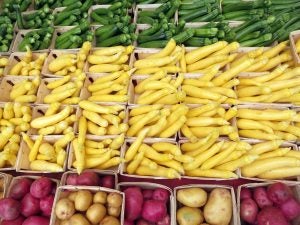Most people envision harvest season as being in September and October, as the weather cools and the big farm machines take to the corn and bean fields in rural areas. But harvest is much bigger than that, and there are several crops that are commonly harvested from your fields and your gardens in the year’s warmest months — though Mother Nature often tinkers with the specifics.
Whether you’re looking for something to fill your kitchen table or to sell during the warm season at a farmers market, here are some crops to consider. All of these enjoy the higher temperatures of both the air and the soil leading right up to the time to harvest them.
Asparagus: One of the earliest things you’ll harvest, and it’s perennial.
Cantaloupe and honeydew: It takes only a few weeks for these to ripen.
Cucumbers: A staple of summer in many regions, these tend to be fairly easy for many folks to grow.
Eggplant: Moreso than many other plants, you’re going to miss out on the perfect taste if you harvest either underripe or overripe.
Garlic: Get them in the ground before winter really sets in and you’ll be graced with a great harvest right around the time when summer officially kicks off.
Peppers: No matter whether it’s a sweet pepper or a hot one, these veggies have a pretty long harvest window to snag something delicious.
Snap beans: These are great both harvested in a younger, smaller stage as well as when they’re full grown.
Tomatoes: We hardly need to make a case for these, since they are a staple of gardens and homesteads and can be used in so many different foods. Just remember, harvest is very labor-intensive for these, so scale accordingly.
Wheat: If you have land and the machinery, winter wheat is harvested in May and June, while spring wheat harvest begins in August.
Others to have on your radar: artichoke, celery, okra, squash, and many types of herbs.



